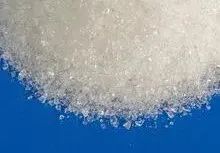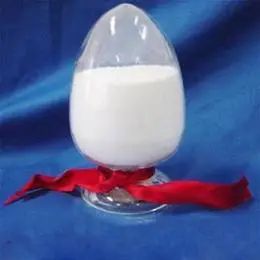Application of antioxidant in lubricating oil
December 17, 2022
With the rapid development of China's industrial economy, oil products, as the "blood of industrial production", will undoubtedly be used more widely and deeply. In view of the increasingly stringent environmental regulations, exhaust emissions and other environmental safety issues, the application of antioxidants in oil products will also show a new development trend.

In the field of lubricating oil: develop towards sulfur and phosphorus free environmental protection. The addition of sulfur and phosphorus can enhance its anti-oxidation performance, but the emission of sulfur and phosphorus will cause environmental pollution. It is the future development trend to increase the research on environmental protection additives; Development towards macromolecules. Polyphenols and alkylated aromatic amines prepared by alkylation, diversification and aromatization have better high-temperature oxidation resistance than mono phenols and small molecule amines; To develop into compound antioxidants. Different phenols, amines, metal passivators, phenols and amines can not only improve the anti-oxidation performance of lubricating oils, but also show a certain anti-wear and antifriction performance. Application of antioxidant in lubricating oil Lubricating oil is easy to be oxidized and deteriorated due to its structural defects, or it is easy to form colloid and sludge, which will affect the lubricating performance; Or it is easy to form paint film on the metal surface, which will seriously affect the normal operation of the engine or even damage the engine; Or generate organic acid to corrode engine components; The increase of water or other oxidation products caused by oxidation reaction will directly affect the performance of the lubricating oil and the normal operation of the engine. In order to ensure the engine efficiency and the service life of the lubricating oil, anti-oxidation additives must be added. The development of antioxidants in lubricating oil has a long history. There are many kinds of commonly used antioxidants in lubricating oil, including thio type, phenol type, amine type, metal chelating type, sulfur free phosphorus nitrogen heterocyclic type, etc. Thio type antioxidants belong to hydro oxidation antioxidants, such as ZDDP, MDTC, etc. The traditional lubricating additive ZDDP has excellent performance and is widely used. It has good anti-oxidation, corrosion resistance and anti-wear properties. However, S and P, which play a major role, are prone to corrosion and catalyst poisoning, causing environmental pollution when discharged into the environment, The International Lubricant Standardization and Demonstration Committee (ILSAC), in a series of meetings held in recent years from GF-4 to GF-5, discussed the requirement to limit the phosphorus content of lubricating oil used in engines to ≤ 0.02%. The reduction of the amount of ZDDP weakened the anti-oxidation, anti-wear and other properties of lubricating oil. Therefore, it is necessary to study environmental anti-oxidation additives without S and P to compensate for the loss of ZDDP reduction, which will be the development direction of lubricating oil additives in the future. Phenolic antioxidant, namely chain termination antioxidant, can improve its antioxidant performance by esterification, amidation, alkylation, macromoleculation, polyphenolization and other ways. When the liquid phenolic ester antioxidant (LEP) is used alone or combined with other types of antioxidants, it can significantly improve the antioxidant performance of oil products. When it is mixed with T534, the effect is the best, and the best is to add 1% of the total dose of 1:4 to the oil products; A new phenolic amide antioxidant AO-BIO was synthesized and applied to acidified oil biodiesel, rapeseed oil biodiesel, B5 and B20 biodiesel blend fuels. Its antioxidant properties were determined by Racimat method. AO-BIO was obviously superior to common phenolic antioxidants, and its dosage was less; A lot of research has been done on T501, L107, RHY505, 2246-S and RHY510 phenolic antioxidants. It is found that other additives except RHY505 can increase the oxidation induction period of type II Base Oil by 2-12 times, and other additives except L107 can increase the initial oxidation temperature of type II base oil by 11-39 ℃; The differential scanning calorimetry (DSC) and thermogravimetry (TG) were used to study a new phenolic macromolecule high-temperature antioxidant PNX. It was found that the decomposition temperature of PNX was 175 ℃ higher than that of the monomer phenol, and the application of PNX in vegetable lubricating oil had a significant inhibition on the formation of free fatty acids, which showed excellent high-temperature oxidation resistance. Antioxidants such as polyphenols, alkyl phenols, phenolic amides and macromolecular phenols have good sensitivity to base oils and fill the performance defects of single phenols, showing excellent anti-oxidation and thermal stability. Amine antioxidants also belong to chain termination antioxidants. They have good sensitivity in high-temperature lubricating oils, but there is a tendency to generate sediment and potential toxicity problems, so they are limited in the application process. Diphenylamine is commonly used, and their antioxidant performance can be significantly improved through alkylation and alkylarylamination. Use diphenylamine and phenyl- α Naphthylamine and C8 olefin can catalyze the alkylation reaction to prepare highly efficient amine antioxidant, which has excellent oil solubility and oil sensitivity, can effectively inhibit the viscosity growth of oil products under high temperature conditions, and significantly improve the oxidation induction period of oil products; Alkyl diphenylamine antioxidant synthesized by diphenylamine and n-hexene, n-dodecene, styrene respectively catalyzed by anhydrous aluminum chloride. Thermogravimetric analysis shows that the three antioxidants have good thermal stability at temperatures higher than 150 ℃. Adding 1% of the amount of base oil can increase the oxidation induction period of base oil to 77 times. In addition, it is found that the synthesized chain alkyl diphenylamine has synergistic antioxidant effect with T501 and ZDDP, The opposite is true for aryl diphenylamine; In addition, dialkyl diphenylamine, alkyl N-phenyl- α- Naphthylamine and others are excellent high-temperature antioxidants. Further research found that it can be used in combination with ashless thiocarbamate, sulfur and phosphorus free molybdate and borate additives, and alkali metal salt additives to effectively improve the antioxidant performance, and the oxidation coupling of different amine antioxidants can also obtain composite antioxidant additives with significantly improved antioxidant performance. The metal chelating type belongs to metal ion passivating agent. There are variable valence metal ions with centripetal ligands, which can reduce the redox potential of metal ions with the strongest coordination number, and turn metal ions with catalytic activity into inert complexes, thus showing the oxidation resistance equivalent to that of hindered phenols. Commonly used organic molybdates, organic copper salts, etc. Organic molybdenum and organic copper additives are the most studied at home and abroad. It is well known that organic molybdenum additives have excellent antifriction, antiwear and extreme pressure properties, and their antioxidant properties are average. However, when they are used in combination with antioxidants, the performance of base oil can be excellent. A large number of studies on organic molybdenum additives show that tricyclic molybdenum compounds, molybdenum amine compounds, molybdenum dialkyl dithiocarbamate, organic molybdenum and other antifriction and antiwear additives are added to 150SN in combination with common antioxidants, It can not only increase the initial oxidation temperature of base oil by 43~73 ℃, but also show excellent antifriction, anti-wear and detergency. This kind of multifunctional composite additive is of great significance for saving fuel and prolonging engine service life; Through in-depth research on a large number of phosphorus free organic molybdenum additives, it is found that the friction reduction effect of molybdate added to base oil can reach about 50%, and will not be weakened because of its oxidation reaction. Moreover, the organic molybdenum additive can perform a good anti-oxidation synergistic effect with amine antioxidants, improving its own anti-oxidation performance by 2-3 times. In addition, the sulfur and phosphorus free molybdate can effectively inhibit the formation of high-temperature sediment; A variety of organic copper salts have been studied. With different organic structures, the oxidation resistance of organic copper salts varies greatly, but they all have good oxidation resistance. Most scholars at home and abroad believe that the loss of electrons of Cu1+leads to the acquisition of electrons from peroxides and reduces its own catalytic activity to achieve the effect of oxidation resistance. The other is that Cu1+generated by ion exchange reaction captures the peroxides and terminates the reaction further; The combined use of cerium carboxylate complex and alkyl diphenylamine (ADPA, It shows that the synergistic use of cerium carboxylate and aromatic amine antioxidants can greatly improve the oxidation stability of oils, and their research should be strengthened next.

The sulfur and phosphorus free nitrogen heterocyclic type not only has excellent anti oxygen and anti-corrosion properties, but also has good extreme pressure, anti-wear and tribological properties. It also has low toxicity, ash free, high temperature resistance and other multi effect properties. It is a new type of environmentally friendly anti oxygen additive. Although there are many kinds of nitrogen-containing heterocyclic derivatives, most of them have a combination structure of nitrogen-containing heterocyclic compounds with dense chemical structure and extreme pressure and anti-wear active elements, so they can show good anti-oxidation, anti-corrosion, anti-wear and antifriction properties; It was found that 1% boronized nitrogen-containing heterocyclic additive could effectively slow down the oxidation reaction of 350SN base oil, significantly reduce the change of sediment and acid value, and reduce the change of viscosity by nearly one time. At the same time, it had good anti-wear and anti-corrosion properties; The research on heterocyclic amine compounds found that phenol antioxidant (L135), amine antioxidant (I57) and heterocyclic amine derivative (BTPA) were added to HVIW H150 base oil at 0.25% dosage, BTPA had better antioxidant performance to base oil, making the oxidation induction period of base oil significantly longer than other additives. Therefore, improved nitrogen heterocyclic amine antioxidant will be the development direction of aviation lubricating oil in the future; The multi effect performance of new nitrogen-containing heterocyclic compounds was investigated by multiple methods and angles. It was found that the diameter of oil wear scar was 30%~50% lower than that of liquid paraffin base oil when the addition amount was 1%, and the thermal weight loss temperature of high-temperature oxidation was 20~25 ℃ higher than that of T202. The nitrogen-containing heterocyclic compounds showed excellent multi effect performance of anti oxygen and anti-corrosion, anti-wear and antifriction, and more ecological and environmental protection, which will be the main trend of the development of future lubricating additives.







